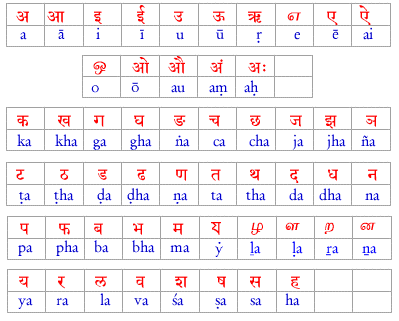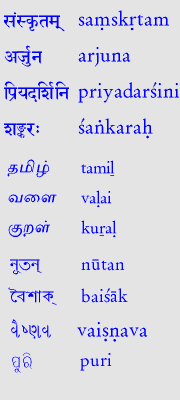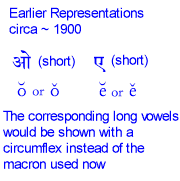Standard Scheme for Roman Transliteration
In order that people of the world may read Indian language text without having to know specific Indian scripts, the Roman transliteration scheme has been a meaningful choice for nearly a century. Here, the aksharas of Indian languages are represented using the letters of the Roman alphabet along with diacritical marks. The use of diacritical marks in Dictionaries is a well established practice, to aid the reader understand the pronunciation of the words. In respect of Indian languages, many different schemes have been in use and it is not unusual to see a reference chart at the beginning of books explaining the notation used in the book for the aksharas.The National Library at Calcutta has standardized the symbols which use Roman letters with suitable diacritics for all the aksharas in use in the languages of the country. The table below illustrates this scheme. Shown in the table are the aksharas in Devanagari along with the phonetic equivalents. The set of aksharas also includes consonants from Tamil and Bengali which are not seen in Sanskrit.

This scheme is a well accepted standard all over the world. However, preparing texts using this scheme is still a difficult task since the font required for this is somewhat scarce. The IITM software allows this scheme as another Indian script and has incorporated the same in the set of supported scripts. Using the IITM multilingual editor, it will be very easy to type the required text directly in this scheme by choosing the option "IPA" for the language. It will also be possible for a person using the editor, to type in any one of the Indian scripts and automatically get the text transliterated into Roman Diacritics.
Examples of Transliterated text

Over the years, different Roman Diacritics have been in use in printed text. Given below are some conventions which had been used earlier.

